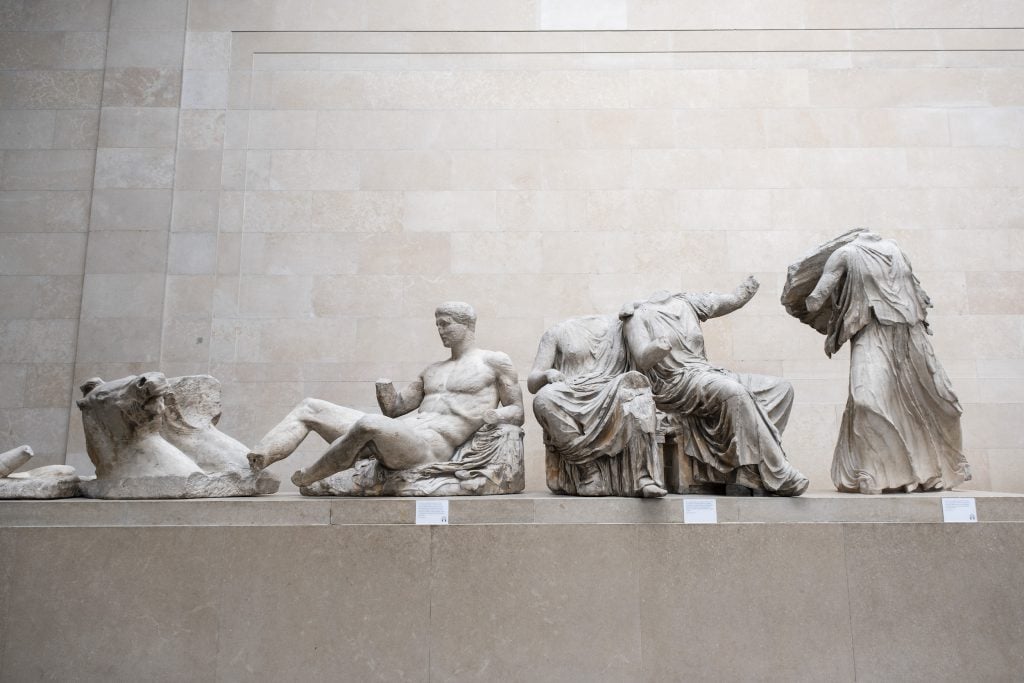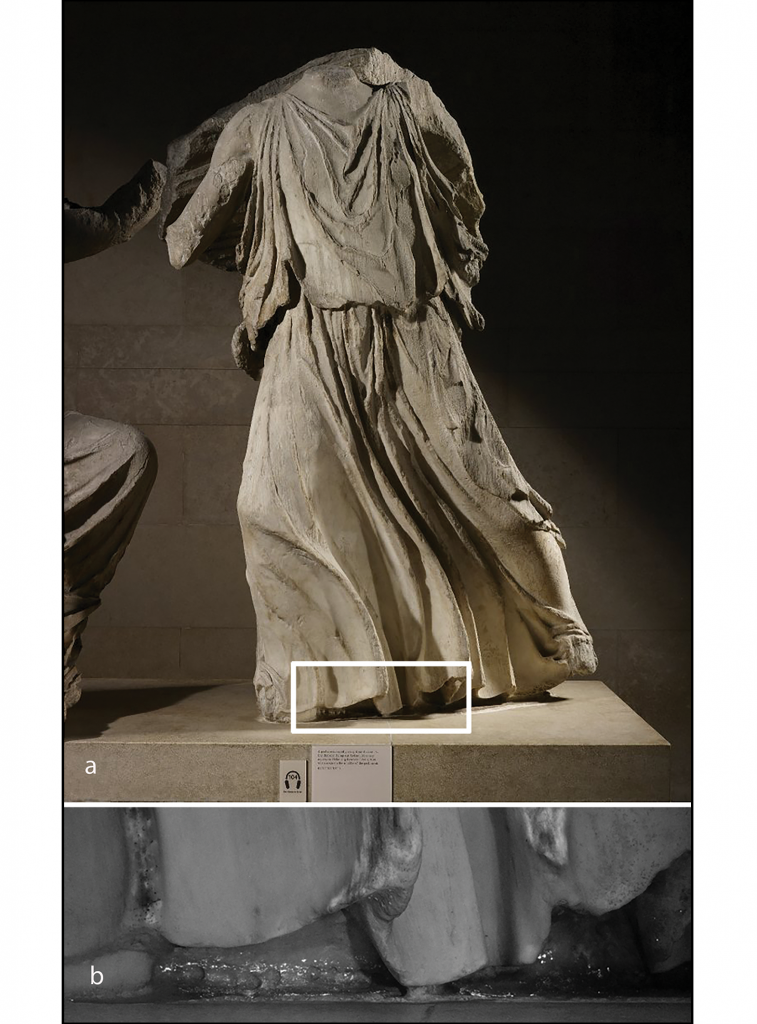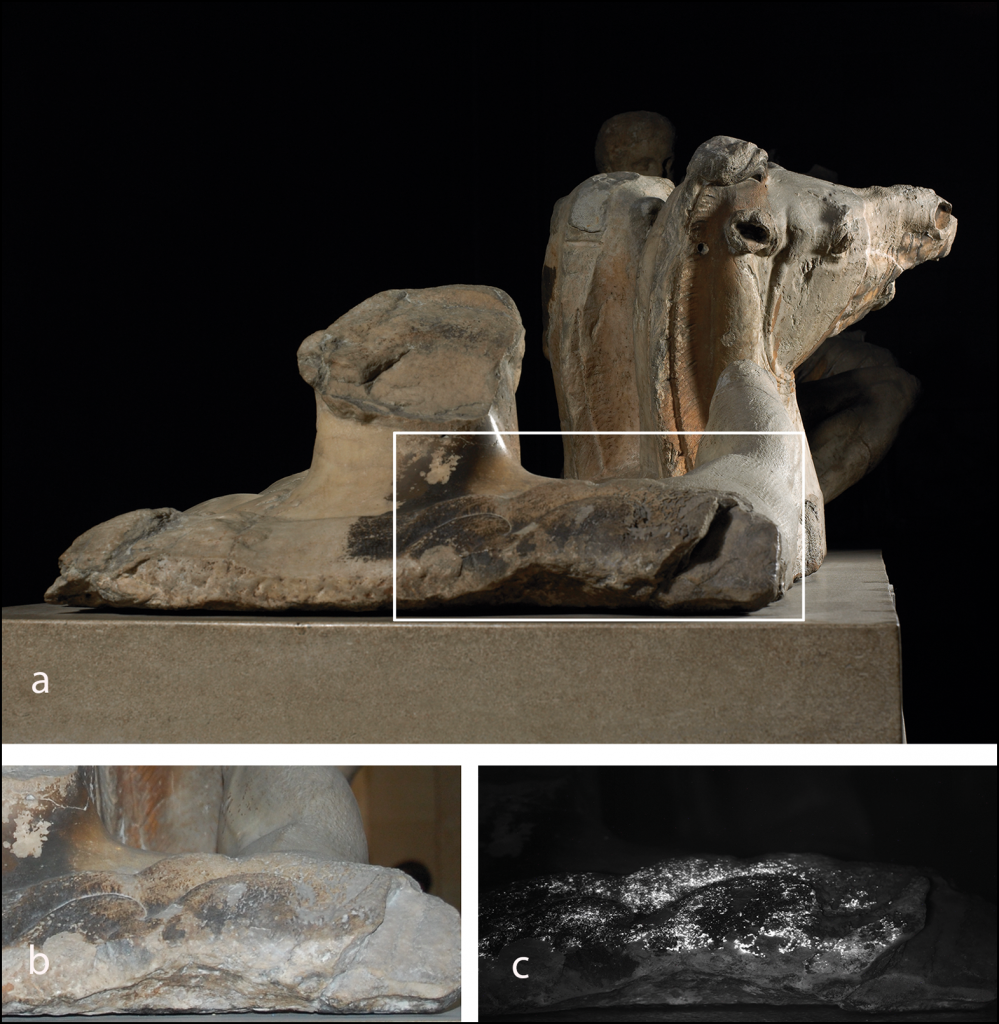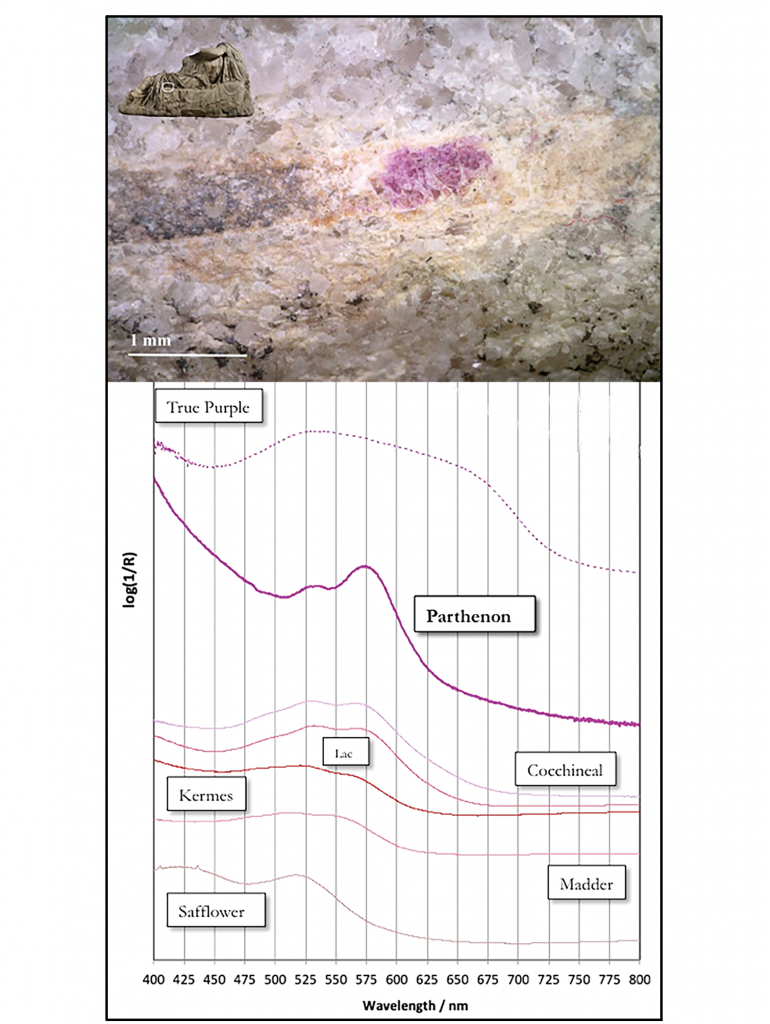Archaeology & History
The Parthenon Marbles Were Painted in Bright Colors and With Intricate Designs, a New Study Reveals
Using non-invasive techniques, scientists have found traces of pigments from blue to purple.

Using non-invasive techniques, scientists have found traces of pigments from blue to purple.

Richard Whiddington

A team of scientists has discovered that the Parthenon Marbles were painted in multiple colors, patterns, and designs. Intriguingly, the sculptures were even painted on their backside, where the designs would not have been seen when they were installed, according to a new study published in the journal Antiquity.
Originally used to decorate the Parthenon, a temple devoted to the goddess Athena in ancient Greece, the works date to the 5th century B.C.E. Since 1816, fragments have been held by the British Museum in London, whose possession of them has resulted in a bitter and ongoing restitution debate.
Although paint rarely survives in archaeological contexts, it has long been suspected the sculptures were brightly colored. Nevertheless, previous studies had failed to find pigment traces.
Now, a range of digital imaging techniques have made it possible to study the 2,500-year-old sculptures at a microscopic level. The results “exceeded expectations, revealing a wealth of surviving paint,” according to the Antiquity report, authored by researchers from the British Museum, Kings College London, and the Art Institute of Chicago.
Most notable was the discovery of large amounts of Egyptian blue on 11 pedimental sculptures and one figure. The pigment was revealed by visible-induced luminescence (VIL), a non-invasive mapping technique pioneered by the lead author on the report, Giovanni Verri.
“In 2007, I developed this imaging technique capable of mapping the presence of a pigment called Egyptian blue,” Verri said. “The Parthenon sculptures were one of the prime candidates to verify if VIL could find any surviving traces. And it did.”

Visible (a) and VIL images (b) by Giovanni Verri. Photo: Courtesy of Trustees of the British Museum.
Composed of calcium, copper, and silicon, the creation of the Egyptian blue pigment dates back 5,000 years. It was essentially the only blue pigment used by the Greeks and throughout ancient Rome. On the marbles, traces of it were used to distinguish elements such as the waves Helios emerged from in his chariot and the serpent-like legs of Cecrops.
Egyptian blue also often served as a base and mixed with other pigments to make colors such as flesh tones, browns, or grays. Accordingly, traces of it were found in the belt of Iris and the leather sandal of a philosopher.

Visible (a and b) and VIL images (c) of the back of the sculpture by Giovanni Verri. Photo: Courtesy of Trustees of the British Museum.
Additionally, small traces of white and purple pigments were found on the sculptures. The purple has excited particular interest because, though it is of plant or animal origin, it differs from the known purple typically used in antiquity known as Tyrian purple, an extremely expensive pigment formed by crushing a specific type of sea snail.
Verri believes it’s possible the purple found on the sculptures is the same one mentioned in ancient treatises in Greek from Egypt. “They explicitly say they could make purple colors of a beauty beyond description that it was worth keeping the recipe a secret,” Verri said. “A well-kept one—we haven’t yet cracked it.”

Detail of the purple organic colourant on Figure EP L. The inset shows the location of the area. Absorption spectrum of the colourant in comparison to standards (figure by Giovanni Verri) Photo: Courtesy of Trustees of the British Museum.
As to why the Athenians decided to paint their monument to Athena, the first reason, the researchers suggest, is simply that it looked nice. Additionally, “the use of color might also have been intended to aid the viewer in the identification of the figures from a distance, for religious or even political purposes.”
Given the grandeur and importance of the Parthenon, the researchers believe its coloration may well have proved inspirational for polychromatic sculpture across the Hellenistic world.
“It is likely that the painting on the Parthenon sculpture drew from tradition and introduced innovative elements at the same time,” Verri said.
More Trending Stories:
Four ‘Excellently Preserved’ Ancient Roman Swords Have Been Found in the Judean Desert